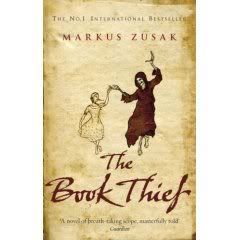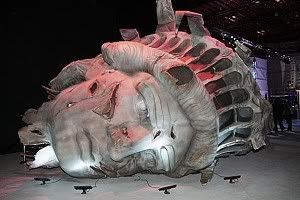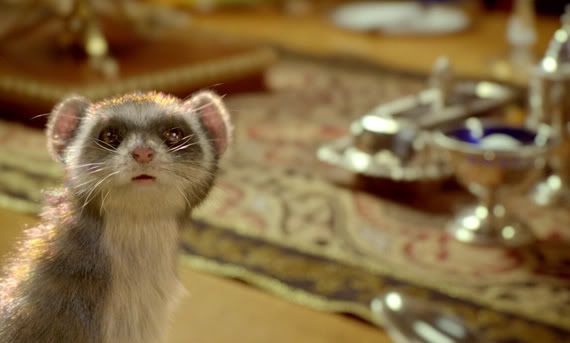Tim Burton’s version of Sweeney Todd does not disappoint; it’s a glorious, over the top, dark, broody, operatic assault on the ears and eyes. After two hours of white pan stick, Robert Smith hair styles and gin swilling kids, I thought I’d died and gone to heaven, or should I say – hell.
It’s an unmistakable Burton picture right from the opening credits which haul you straight into the movie’s universe; Sweeny Todd’s titles are to the Gothic what James Bond is to spy films. From the first breath, the rush of a climbing organ lifts you into a dreary, dangerous, studio-London where the sky is always inky and tears inevitably turn to blood. Rivers of blood.

I knew very little about the tale of Sweeney Todd, the demon barber of Fleet Street, who took gratuitous and grisly revenge on the people of London when he was deported for a crime he didn’t commit. He was set up by a pervy and corrupt Judge Turpin, played by the gorgeous Alan Rickman, and separated from his wife and baby daughter. Now back in London, Todd changes his name, takes up with the equally amoral Mrs Lovett, played by Helena Bonham Carter, and sets up a grisly production line,
“How about a shave, sir?”
And before the towel has settled on their chests, he’s slit their throats, and Mrs Lovett’s transformed the plentiful victims into delicious meat pies to be fed back to eager but unsuspecting Londoners.
Johnny Depp, in the title role, is unrestrained but magnificent. I have never been the biggest Jack Sparrow fan. I loved the novelty of the first Pirates film but I’ve refused to watch the last two in the franchise. In Sweeney Todd, while Depp’s mock-ney accent rankles on the English ear, it’s more David Bowie than Keith Richards this time round, the film is so theatrical that somehow it can take it. It’s his fifth collaboration with Tim Burton and, there’s no doubt about it, they’re good for each other. Burton keeps Depp’s feet down on the ground by challenging him and in return, the Depp’s presence, the sheer brilliance of his physical acting, gives the film just enough reality and weight to keep it from looking like animation. I have never seen a man walk through a door like Mr Depp does.
What I didn’t like, of course, was the music. I love a musical but I’m not au fait with the Sondheim phenomenon and I felt mildly uncomfortable at the sheer volume of singing; the songs aren’t catchy or melodious but instead are vehicles for plot and motivation and no sooner are sung than they’ve disappeared down the drain like regular dialogue. There’s nothing to lift the spirits there and certainly no tune to hum in the shower.
Fortunately, I got so much pleasure from the visuals that I didn’t exactly suffer.
The film is dark and beautiful; Monochrome lit faces and midnight blue are a perfect canvas for the relentless bloodletting. Rooftops and skylights, dodgy pie fillings, attics and slums – it’s a London you wouldn’t want to live in but which you can’t tear your eyes away from. My favourite shot is where Sweeney Todd and Mrs Lovett stand in her shop window; he holds a cleaver and she holds a rolling pin – the perfect couple. http://www.movieweb.com/movies/film/50/4450/gal2878/
"> loads of lovely stills here
I understand that Helena Bonham Carter, Mrs Burton, auditioned with the rest of the pack; in one interview she said, a hint of faux bitterness in her voice,
“The fact that I was the mother of his children made no difference.”
And she’s fine. I just wasn’t convinced and I can’t quite put my finger on why. Depp,
was Sweeney; in every frame he frowned and brooded and was driven by vengeance. God knows how he slept at night. Helena, on the other hand, looked like she was playing a pantomime villain and I sensed a flicker of irony in her performance which may have been her characteristic, English, dead-pan humour or, it may have been something to do with that slight mad look in her eyes which, while it made it seem believable that Mrs Lovett would adapt to the new pie filling overnight, means that she never looks at the camera and doesn’t engage with you.
There are strong supporting performances from everyone: Rickman is first choice for unsavoury but well-spoken types in a wing collar. Sporting calcified nails he is lascivious and pathetic, inappropriately showing off his leather bound porn collection, he reminded me of Tiberius in I Claudius. The judge is ably assisted by the best turn in the movie – a cross between Joe Pesci and Tweedledum - Timothy Spall, ballectic, Dickensian and riveting. Sacha Baron Cohen plays an Italian barber and it shows what kind of movie this is that he fits right in. Did anyone else notice how ‘packed’ his tights were? A special mention must go to Ed Sanders who plays the gin guzzling boy who falls right out of the workhouse and into the fire.
Treat yourself; go see Sweeney Todd. It’s worth it just to hear the word ‘tonsorial’ uttered on screen. And remember, it’s all fake blood.




